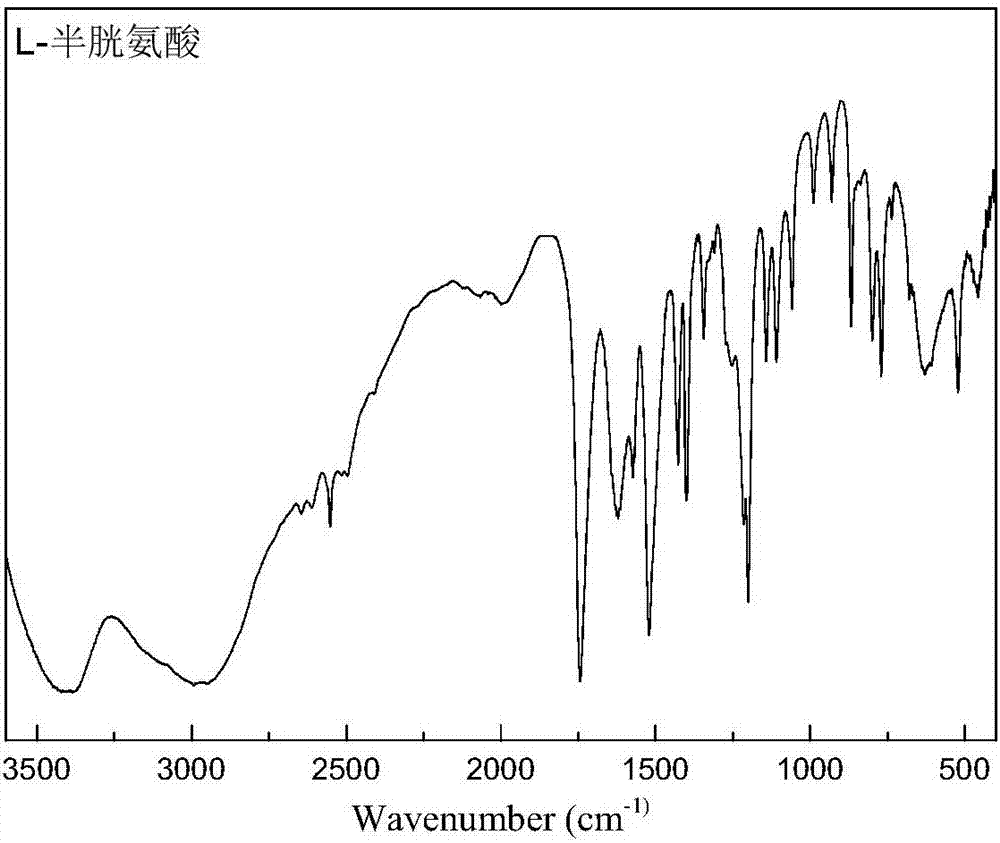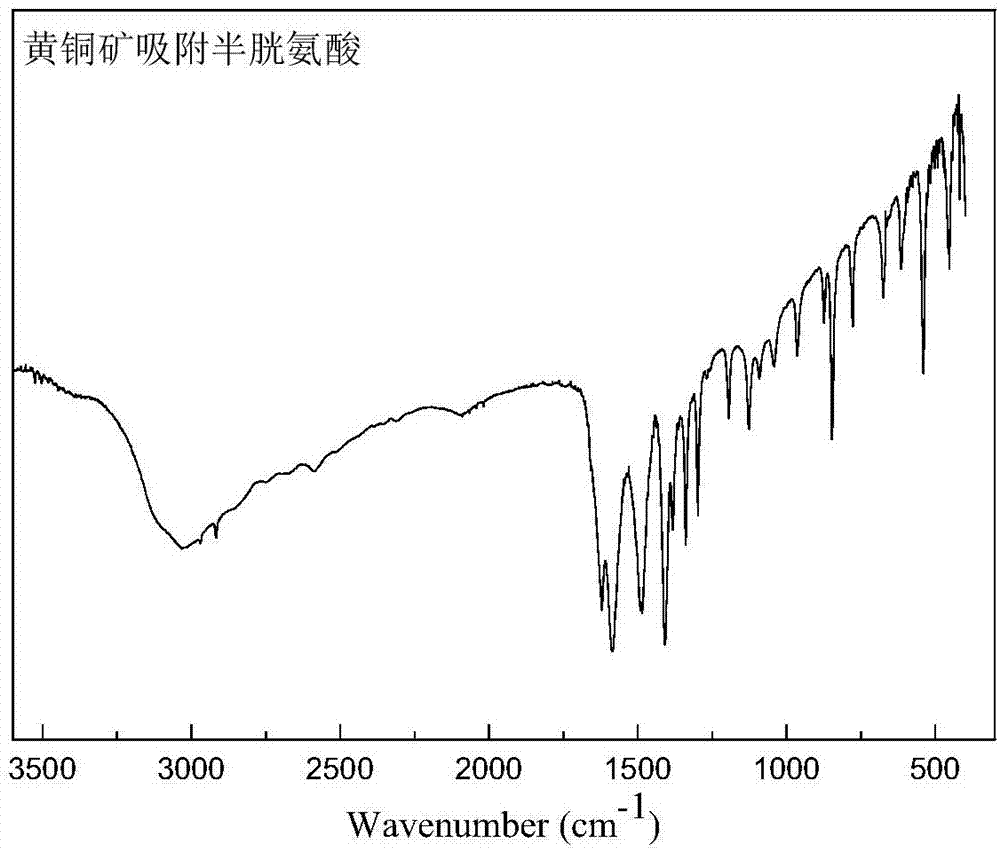Application of L-cysteine and L-cysteine salt in metal sulfide mineral flotation separation
A technology of cysteine salt and cysteine, which is applied in the field of mineral flotation separation and separation in mineral processing, can solve the problems of failure to pass environmental protection acceptance, harsh operating environment, and poor drug stability, and is conducive to large-scale application, Efficient flotation separation, the effect of improving hydrophilicity
- Summary
- Abstract
- Description
- Claims
- Application Information
AI Technical Summary
Problems solved by technology
Method used
Image
Examples
Embodiment 1
[0033] Using L-cysteine and sodium sulfide as inhibitors, a comparison test of flotation separation was carried out on copper-molybdenum mixed flotation rough concentrate in a certain mine in Henan. Put the copper-molybdenum mixed concentrate in a 1.5L flotation tank, adjust the pulp concentration to about 35%, use 20g / t of L-cysteine for roughing, and stir for 5 minutes, then inflate for 0.5 minutes, and float The time is 6 minutes. In selection one, the pulp is transferred to a 0.5L flotation tank, the dosage of inhibition is 10g / t, the stirring time is 2 minutes, and the flotation time is 6 minutes. Concentration 2, transfer the concentrate of the selection 1 to a 0.2L flotation tank, the dosage of inhibitor is 10g / t, the stirring time is 2 minutes, and the flotation time is 4 minutes. The test flow chart is as Figure 6 , and the results are shown in Table 1. It can be seen from Table 1 that under the same dosage, when cysteine is used as the copper-molybdenum sep...
Embodiment 2
[0038]Using sodium L-cysteine as an inhibitor, the flotation separation test of mixed copper-molybdenum rough concentrate in a mine in Henan was carried out. Put the copper-molybdenum mixed concentrate in a 1.5L flotation tank, adjust the pulp concentration to about 30%, use 10g / t of roughing L-cysteine, and stir for 5 minutes, then inflate for 0.5 minutes, and float The time is 6 minutes. Selection 1, transfer the ore pulp to a 0.5L flotation tank, the inhibition dosage is 5g / t, the stirring time is 2 minutes, and the flotation time is 6 minutes. Concentration 2, transfer the concentrate of the selection 1 to a 0.2L flotation tank, the dosage of inhibitor is 5g / t, the stirring time is 2 minutes, and the flotation time is 4 minutes. Its test procedure is as follows Figure 6 As shown, the results are shown in Table 2. It can be seen from Table 2 that when sodium L-cysteine is used as the copper-molybdenum separation inhibitor, the molybdenum grade and copper grade in th...
Embodiment 3
[0043] Using L-cysteine as an inhibitor, the flotation separation experiment was carried out on the mixed lead-molybdenum rough concentrate in a mine in Henan. Put the copper-molybdenum mixed concentrate in a 3.0L flotation tank, adjust the pulp concentration to about 30%, use 25g / t of L-cysteine for roughing, and stir for 5 minutes, then inflate for 0.5 minutes, and float The time is 6 minutes. Selection 1, the pulp is transferred to a 1.5L flotation tank, the dosage of inhibition is 5g / t, the stirring time is 4 minutes, and the flotation time is 6 minutes. Concentration 2: transfer the concentrate of the selection 1 to a 0.5L flotation tank, the dosage of inhibitor is 5g / t, the stirring time is 4 minutes, and the flotation time is 4 minutes. Concentration 3: put the secondary concentrate in a 0.5L flotation tank with an inhibitor dosage of 5g / t, stirring time of 4 minutes, and flotation time of 4 minutes. Its test procedure is as follows Figure 7 As shown, the result...
PUM
 Login to View More
Login to View More Abstract
Description
Claims
Application Information
 Login to View More
Login to View More - R&D
- Intellectual Property
- Life Sciences
- Materials
- Tech Scout
- Unparalleled Data Quality
- Higher Quality Content
- 60% Fewer Hallucinations
Browse by: Latest US Patents, China's latest patents, Technical Efficacy Thesaurus, Application Domain, Technology Topic, Popular Technical Reports.
© 2025 PatSnap. All rights reserved.Legal|Privacy policy|Modern Slavery Act Transparency Statement|Sitemap|About US| Contact US: help@patsnap.com



